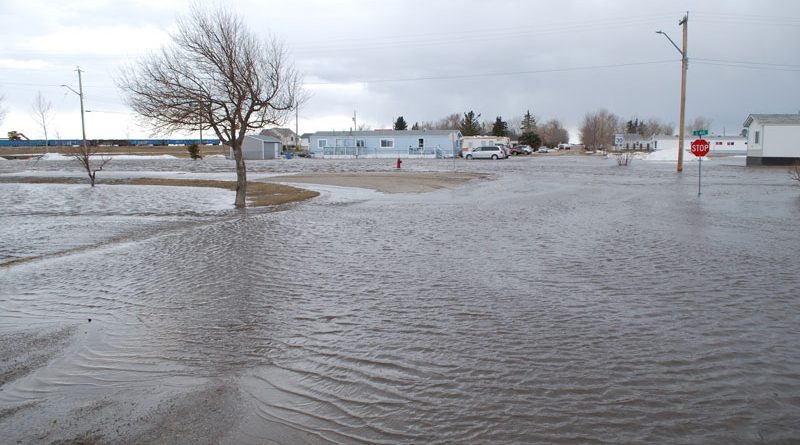Predicting floods
By Sharon McLeay Times Contributor


Manny Everett Photo
Mark Bennett, executive director of the Bow River Basin Council, said he didn’t think major flood conditions were anticipated at this time.
“You can only predict with the information that you have,” said Bennett. “Conditions for the mountain snowpack are fundamentally different than the ones in Taber and Siksika.”
He said he suspects the localized ground flooding has more to do with the soil saturation levels and water not having anywhere to drain. With the cooler temperatures, frost hasn’t yet melted and, combined with soil types that don’t absorb water well, the conditions don’t allow drainage. He said once the available space in the soil belowground is filled, the water would collect in one place or move. As for the mountain snowpack, Bennett said unique conditions have to be in place for flooding like the one that led to the 2013 Calgary-area flooding.
“There is always a danger if you have a rapid melt and freeze/thaw conditions concentrated over a week or two,” said Bennett.
Measures have been taken in the province to address flooding and monitoring systems are watched carefully.
Alberta Environment and Parks has awarded over $160 million to various municipalities for storm water and wastewater improvement. One project developed by TransAlta is a water systems software program that monitors inflow/outflow to the various infrastructure systems. Through collected data, areas under water stress can now be pinpointed for alleviation through water level adjustments at dams, spills and floodgates.
Infrastructure work has also been done by various municipalities, improving things like new riverbank support, diking and water walls to protect low lying areas such as the Calgary Stampede grounds and the Calgary Zoo.
Wheatland County crews have been working to help farmers clear some of the ice from culverts and have seen some roadways with water build-up.
“As of right now, there is some standing water and water over roads in some areas, but we have no roads that are deemed impassable,” said Mike Ziehr, general manager infrastructure and transportation with Wheatland County. “Our crews are keeping an eye on all areas and we continue to encourage Wheatland County residents to let us know of any problem areas.”
Bennett said individuals could be prepared for any emergency, including flooding, by developing an action plan. He recommended investigating before purchasing property in floodplains or low-lying areas. Keep treasured items and electronics out of basements and move them to higher levels of the home. Purchase small sump pumps and generators to use if water overflow or flooding does occur. Locate local evacuation stations and post emergency numbers on or by the phone. Have a 72-hour emergency kit that can be easily accessed. It should include medications, a change of clothes, toiletries, flashlight, first aid supplies, specialized need items, important paper copies, pet supplies, food and water. For complete instructions and items for emergency preparation check out aema.alberta.ca.
